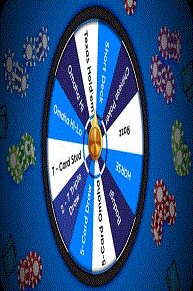Poker Mathematics

Mathematics of Poker has gained popularity over the years, with most players relying on quantitative analysis and application of mathematics to the game.
Poker is a game played between two or more players for a number of rounds. There are several different types of the game. However, they all have certain aspects in common.
For decades, the topmost level of Poker has been dominated by players who have learned the game by playing it, and are adept at reading other players' hands from betting patterns and physical tells.
In a span of 10 years, a new breed has risen within the poker community. They apply computer science and mathematics tools to Poker and share the information across the Internet.
Variants of Poker
Mathematics of Poker differs depending on the type of Poker. It's essential to know the rules of a poker game to be able to calculate probabilities in Poker.
Some of the most common poker games include;
- Five-Card Draw
- Seven-Card Stud
- Texas Hold-Em

Poker Hands
A poker hand is a set of 5 cards drawn from a poker deck. Each hand is valued differently.
Poker hands are combinations rather and not permutations meaning that the order of the cards does not matter.
There are different types of poker hands;
- High card
- One Pair
- Two Pair
- Three of a Kind
- Straight
- Flush
- Full House
- Four of a Kind
- Straight Flush
- Royal Flush
Regardless of whichever variety of Poker is being played, the hands of Poker typically remain the same.
Probabilities of Poker Hands
Mathematics of Poker can also be used to calculate the probability of outcomes of every poker hand.
The chance of each hand always determines its value. It's important to note that the more likely hands will always be worth less.
Although different Poker types involve different rules on drawing cards, rankings are usually used to decide the best hand.
Is Mathematics essential in Poker?
Some winning poker players don't rely heavily on maths, though the very best players use poker math regularly to make their decisions. Understanding the Mathematics of poker games increases your chance of being a winning player in the long run.
The maths surrounding Poker is often straightforward. It can help you refine the decisions you already make based on instincts to improve your winning chance.

How to use Mathematics of Poker
When it comes to a deck of cards or even the probabilities of events in Poker, several mathematical observations can be made.
Pot-oddsPot is the total cash staked by players every round. Each round, the winner gets all the contents of the pot. In case there is a draw, then the pot is equally shared among the players in a draw.
Pot odds involves using the likelihood of landing a win when you are on a drawing hand to choose whether or not to call a raise or a bet.
The two ways to calculate pot odds in Texas Hold 'em.
- Percentage method
- Ratio method
Whichever method you decide to choose, the result will be the same
However, most people prefer the ratio method for working out pot odds.
Bluffing successMathematics of poker is also essential in calculating how many times the bluff should work.
The percentage of the total pot you invests equal to How frequent your bluff should work.
Poker maths can seem a bit complex to even some of the best players. However, having some knowledge and understanding of some basic math can help you greatly. go a long way towards helping you refine your decisions.


